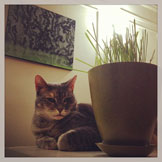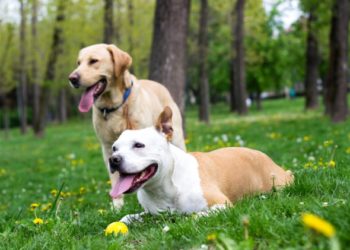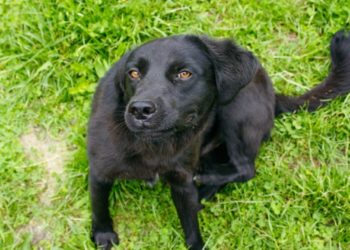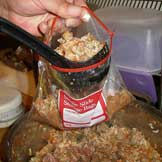
Megacolon can be a frustrating disease for veterinarians, owners, and, most importantly, for the affected cats. The disease develops when the muscles within the wall of the colon (large intestine) no longer contract as they should. Feces builds up and dries out within the colon, resulting in constipation.
Most cases of megacolon are idiopathic, meaning we don’t know why the condition developed in that particular individual. Less frequently, an injury, developmental disorder, or other primary condition prevents the colon from emptying as it should, causing it to stretch and stop functioning normally. In either case, cats with megacolon typically:
- Strain to defecate
- Exhibit pain while defecating
- Have abdominal discomfort
- May lose their appetite
- Produce small amounts of hard fecal matter that can contain blood or paradoxically produce small amounts of liquid feces, leading their owners to wrongly diagnose them with diarrhea
Definitively diagnosing megacolon is not too difficult. During a physical exam, a veterinarian can usually feel that the colon is distended with feces, a finding that is confirmed with abdominal X-rays. Additional diagnostic tests (e.g., blood work, urinalysis, and/or abdominal ultrasound) may be necessary to determine if megacolon has developed as a result of another condition.
The initial treatment for megacolon centers on getting the impacted feces out of the colon. In milder cases, an enema is all that is needed. (As an aside, never give a cat an enema at home without first consulting with a veterinarian. Some over the counter formulations are very toxic to cats.) More severely affected cats need to be put under general anesthesia and undergo a manual evacuation — fancy words for the veterinarian donning latex gloves and removing fecal material by hand, a procedure that necessitates lots of patience and lubrication.
Once the cat is all cleaned out, the focus turns to preventing future episodes of constipation. Since fecal matter consists primarily of unabsorbed food, it shouldn’t be too surprising that dietary manipulation is central to treatment. In my experience, most cats respond best to a highly digestible food that reduces the amount of feces they produce. They simply have less to expel, which decreases the risk they’ll get backed up. Cats are cats however, and some prefer to do things differently.
When constipation persists despite feeding a highly digestible food, a high-fiber diet is worth a try. These cats then produce more stool than normal, but it is softer, easier to pass, and the increased bulk seems to stimulate the colon to contract more effectively. A couple of teaspoons of psyllium, canned pumpkin, or wheat bran can be added to a cat’s regular food to increase the fiber content.
Whichever diet works best, it is very important for the cat to remain well-hydrated so stool in the colon stays soft. For this reason, I generally recommend canned food only for my megacolon patients. Intermittent subcutaneous fluid therapy can be helpful as well. Stool softeners (e.g., lactulose) and medications that enhance muscular contractions in the wall of the colon (e.g. cisapride) are also frequently prescribed.
Most cats respond well to dietary and medical management, although they may still need an enema from time to time. In advanced cases, surgically removing the non-functioning portion of a cat’s colon is a good option, which brings about the need for more dietary manipulation … but that’s a subject for another day.

Dr. Jennifer Coates
Image: Kristine Paulus / via Flickr









